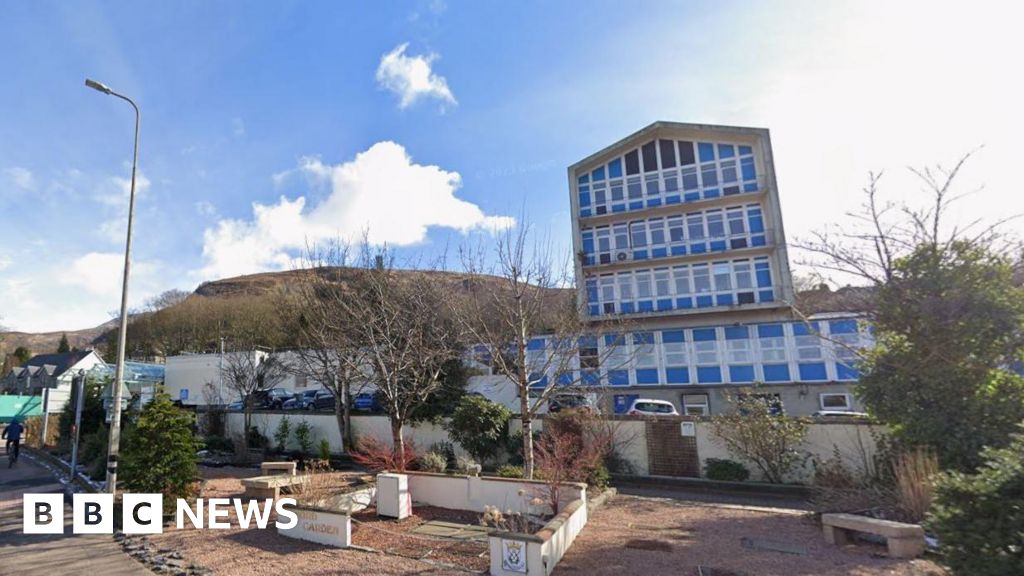Doctor saw under-18s alone while facing child abuse image charges

Sustainable Development Goals (SDGs): Doctor Carries Out Unsupervised Consultations with Under-18s

Introduction
A doctor who was facing charges over child abuse images in England carried out unsupervised consultations with under-18s while working at a Scottish hospital, a tribunal has revealed.
Dr Carey Girling was banned from treating child patients without a chaperone present while he was being investigated by police.
He broke these restrictions on more than one occasion in March 2022 while working at Belford Hospital in Fort William. The following year, he was convicted of making indecent photographs of children.
The Medical Practitioners Tribunal Service (MPTS) has now struck him off the medical register.
Background
Dr Girling qualified as a doctor in 2017 and in March 2022 was employed as a locum doctor in the emergency department at Belford Hospital – a general hospital within the NHS Highland catchment.
Its A&E department treats 9,000 patients every year.
The tribunal heard that Dr Girling was initially arrested in November 2020 accused of being in possession of child abuse images.
He was allowed to return to work during the investigation but was required to be supervised while attending to patients under the age of 18.
He was also required to keep an adequate log detailing his consultations and have the chaperone sign it.
The tribunal found that Dr Girling broke this condition and carried out unsupervised consultations on child patients seven times between 20 and 27 March 2022.
He was also found to have provided false information about chaperones being present during the consultations but the MPTS said it received no evidence to confirm this.
The tribunal heard that an email from a senior charge nurse at the hospital to the General Medical Council (GMC) stated “no one in the emergency department was aware that he required a chaperone or required to have a log completed”.
Conviction and Ruling
The tribunal comes after Dr Girling was convicted of making indecent photographs of children in England in 2023.
A police investigation found 28 Category A images on his laptop and one Category A image on an external hard drive belonging to him.
He initially pled not guilty to the charges, before changing his plea at Cambridge Crown Court in June, 2023.
He was ordered to carry out 200 hours of unpaid work, attend rehabilitation, and register with the police.
He also has to comply with a sexual prevention order until 2028.
The MPTS tribunal ruled on Friday that Dr Girling’s fitness to practise is impaired by reason of misconduct and conviction.
A ruling published by the MPTS said they were “satisfied that the circumstances of Dr Girling’s case were so serious that his misconduct and conviction were fundamentally incompatible with continued registration”.
It added that his actions had “undermined and breached the trust and confidence of patients and the public in the medical profession” and that his “convictions inevitably brought the profession into disrepute”.
In a statement submitted to the tribunal, the doctor said he no longer worked in a clinical role and “had no intention of ever returning to one”.
He said he had always done his “best for patients” and wished to “move on in life and from medicine”.
Dr Girling has 28 days to appeal the decision.
NHS Highland said Dr Girling had clear instruction from the General Medical Council (GMC) – which maintains the official register of medical practitioners – that he had to have chaperones for any patient under 18.
A spokesperson added: “Immediate action was taken to suspend any further locum shifts and we communicated to the GMC that he was in breach of his conditions.
“It is the action taken by NHS Highland that has resulted in this further tribunal being undertaken.”
SDGs, Targets, and Indicators Analysis
1. Which SDGs are addressed or connected to the issues highlighted in the article?
- SDG 3: Good Health and Well-being
- SDG 16: Peace, Justice, and Strong Institutions
The issues highlighted in the article are related to the misconduct of a doctor and the potential harm caused to child patients. These issues are connected to SDG 3, which focuses on ensuring good health and well-being for all. Additionally, the article mentions the doctor’s conviction for making indecent photographs of children, which relates to SDG 16, which aims to promote peace, justice, and strong institutions.
2. What specific targets under those SDGs can be identified based on the article’s content?
- SDG 3.7: By 2030, ensure universal access to sexual and reproductive health-care services, including for family planning, information and education, and the integration of reproductive health into national strategies and programs.
- SDG 16.6: Develop effective, accountable, and transparent institutions at all levels.
The specific targets identified based on the article’s content are related to ensuring access to healthcare services and developing accountable and transparent institutions. These targets align with SDG 3.7 and SDG 16.6, respectively.
3. Are there any indicators mentioned or implied in the article that can be used to measure progress towards the identified targets?
- Indicator for SDG 3.7: Proportion of women of reproductive age (15-49 years) who have their need for family planning satisfied with modern methods.
- Indicator for SDG 16.6: Existence of independent national human rights institutions in compliance with the Paris Principles.
The article does not explicitly mention indicators, but based on the identified targets, the following indicators can be used to measure progress towards those targets. The proportion of women of reproductive age who have their need for family planning satisfied with modern methods can be used as an indicator for SDG 3.7. Additionally, the existence of independent national human rights institutions in compliance with the Paris Principles can be used as an indicator for SDG 16.6.
SDGs, Targets, and Indicators Table
| SDGs | Targets | Indicators |
|---|---|---|
| SDG 3: Good Health and Well-being | SDG 3.7: By 2030, ensure universal access to sexual and reproductive health-care services, including for family planning, information and education, and the integration of reproductive health into national strategies and programs. | Proportion of women of reproductive age (15-49 years) who have their need for family planning satisfied with modern methods. |
| SDG 16: Peace, Justice, and Strong Institutions | SDG 16.6: Develop effective, accountable, and transparent institutions at all levels. | Existence of independent national human rights institutions in compliance with the Paris Principles. |
Source: bbc.com








